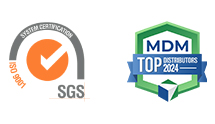When it comes to near misses, there are several important things to keep in mind for the safety of your employees and the overall improvement of your company’s safety culture. Here are some key points to consider:
1. What is a near miss?
A near miss is an unplanned event or situation that could have resulted in an injury, illness, or property damage but did not. It is an opportunity to learn from potential hazards and prevent future incidents. Different industries exhibit varying levels of near miss occurrences due to their unique working environments and associated hazards. For example, the manufacturing and construction sectors commonly face a higher occurrence of near misses. In 2020, the Bureau of Labor Statistics (BLS) reported that in the manufacturing industry, there were around 3.3 non-fatal injuries and illnesses for every 100 full-time workers. This data emphasizes the need for tailored safety measures and proactive reporting mechanisms.
2. Why are near misses important?
Near misses are significant indicators of potential hazards and weaknesses in your safety systems. By paying attention to near misses, you can identify and address underlying causes and prevent more severe incidents from occurring.
3. Does OSHA get involved in near misses?
Occupational Safety and Health Administration (OSHA) recognizes the value of near miss reporting and encourages companies to establish a culture that promotes reporting and investigation. While OSHA does not require reporting of near misses, they view them as indicators of potential hazards and expect employers to take appropriate actions to prevent future incidents.
4. Should I let my insurance company know about a near miss?
Many insurance companies also recognize the importance of near miss reporting. By identifying and addressing potential risks, you demonstrate proactive risk management, which can positively impact your insurance rates and coverage terms.
5. Who should report and investigate a near miss?
Encourage your employees to report near misses without fear of repercussions. Investigate each reported near miss thoroughly to determine the root causes and implement corrective measures. Communicate the findings and actions taken to prevent similar incidents in the future. The National Safety Council estimates that only 5-10% of near misses are reported.
6. How many near misses happen in a given year?
Unfortunately, near misses are often underreported due to various factors such as lack of awareness, fear of consequences, or a culture that discourages reporting. According to the National Safety Council (NSC), for every serious injury or fatality, there can be as many as 29 minor injuries and approximately 300 near misses, that if reported and investigated, could have prevented the serious injury from ever occurring. This staggering ratio emphasizes the critical role of near miss reporting in preventing more severe incidents.
7. What are the benefits of near misses?
- Early identification of hazards: Near misses help identify potential risks and hazards in the workplace before they cause actual harm.
- Learning opportunities: Analyzing near misses allows you to understand underlying causes and implement preventive measures, improving your safety systems and processes.
- Enhanced safety culture: Encouraging near miss reporting and investigation fosters a culture of proactive safety awareness, where employees actively participate in identifying and mitigating risks. Did you know that according to NIOSH, nearly 20 percent of forklift accidents involve a pedestrian and 36 percent of forklift-related deaths are pedestrians. However, properly training operators and installing clear signage from AccuformNMC including floor tape, wall signage or other safety solutions like virtual LED signage, line projectors and sensors can dramatically improve awareness and prevent accidents.
- Cost savings: Preventing near misses can save your company money by avoiding potential property damage, medical expenses, and legal liabilities associated with more severe incidents.
Remember, even if your company has an excellent safety record, it is crucial to remain vigilant and continuously improve your safety practices by addressing near misses and potential hazards.
Arbill’s holistic approach to safety includes performing site assessments, exceptional Environmental Health and Safety training and consulting, safety product, services and technology.
Have a safe day!














